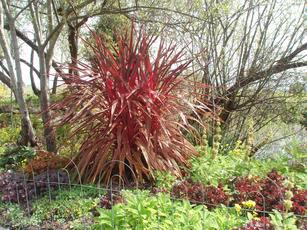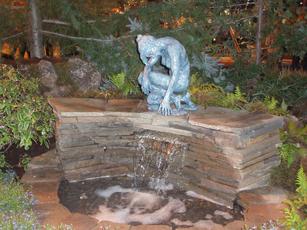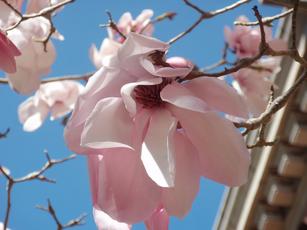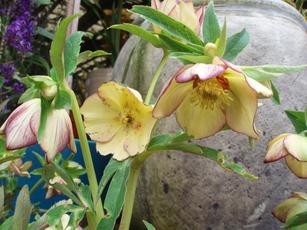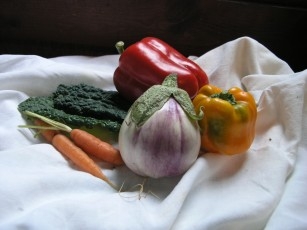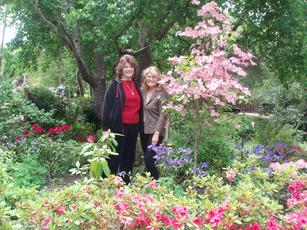 One of the perks of writing this gardening column for the Press Banner is being invited to visit beautiful gardens. I recently had the honor to tour the garden of fellow columnist, Colly Gruczelak, writer of Plain Talk About Food, at her home in Ben Lomond. I've known Colly for many years going back to when she moved here in 2004 from Thousand Oaks. If you know Colly it will come as no surprise that she is just as enthusiastic about plants as she is about good food. She gardens with a resident deer population and had lots to say about this dilemma.
One of the perks of writing this gardening column for the Press Banner is being invited to visit beautiful gardens. I recently had the honor to tour the garden of fellow columnist, Colly Gruczelak, writer of Plain Talk About Food, at her home in Ben Lomond. I've known Colly for many years going back to when she moved here in 2004 from Thousand Oaks. If you know Colly it will come as no surprise that she is just as enthusiastic about plants as she is about good food. She gardens with a resident deer population and had lots to say about this dilemma.
When she first moved to the Ben Lomond property there was "nothing in the garden but bottlebrush and bare ground" she said. Not wanting to fence the property she has come to know what the deer are not interested in eating for dinner- in her garden anyway. Located right on the San Lorenzo River, her garden blends perfectly with the natural woodland setting.
A huge Fragrantissima Improved rhododendron poked its beautiful white flower trusses through an ornamental low fence. A Sally Holmes rose bloomed atop the fence, too. Colly explained she has included several roses in the garden and will spray them with a bitter repellent if the deer become too interested but often surrounding a rose with plants the deer don't like is enough to keep the buds safe.
A beautiful purple Grand Slam rhododendron bloomed nearby. Colly keeps plant tags in her Sunset Western Gardening book so she can look up a plants name when necessary. Given the hundreds of beautiful specimens in the garden this is no easy task.
I was surprised to see so many azaleas blooming in the garden. I knew rhododendrons are deer resistant but it surprised me to learn that her azaleas thrive also . Colly grows Encore azaleas that bloom continually throughout the season. They border all the garden paths and this first flush of flowers was spectacular.
She has an Iceberg rose intertwined with a Jackmanii clematis. The buds of the clematis were not quite open but I can imagine how stunning this purple and white combination will be. I love Iceberg roses. They scent the air with honey and vanilla. Colly doesn't worry about pruning the clematis according to the book. She "leaves it alone" and from the looks of the many buds about to burst with color it's doing just fine.
Another gardening tip Colly shared with me is her use of bungee cords to quickly hold up a plant until she has the time to tie it up properly. She buys 5 of these cords for a dollar and swears by their usefulness.
We stopped to admire a Cherokee Brave dogwood in full bloom. Underneath, blue violet columbines covered the ground. As they reseed the patch grows larger and larger. The blue and pink made a breathtaking combination blooming at the same time.
As we strolled through the garden I saw many other plants happily growing in spite of the deer. Fragrant daphne, fuchsia thymifolia, Australian fuchsia, Jack Frost brunnera, Mt. Tamboritha grevillea, lily-of-the-valley and Cape plumbago were all untouched. It surprised me to hear that she is replacing a large stand of white rockrose with Kaleidescope abelia. Seems her deer loved this rockrose and "ate it to the ground". Go figure about rockroses. Along her road there were lots of the dark pink variety not even nibbled in the slightest.
We finished our tour at the new sitting area she has created to enjoy with her husband in the evening. I'm sure it's the perfect way to end the day.

